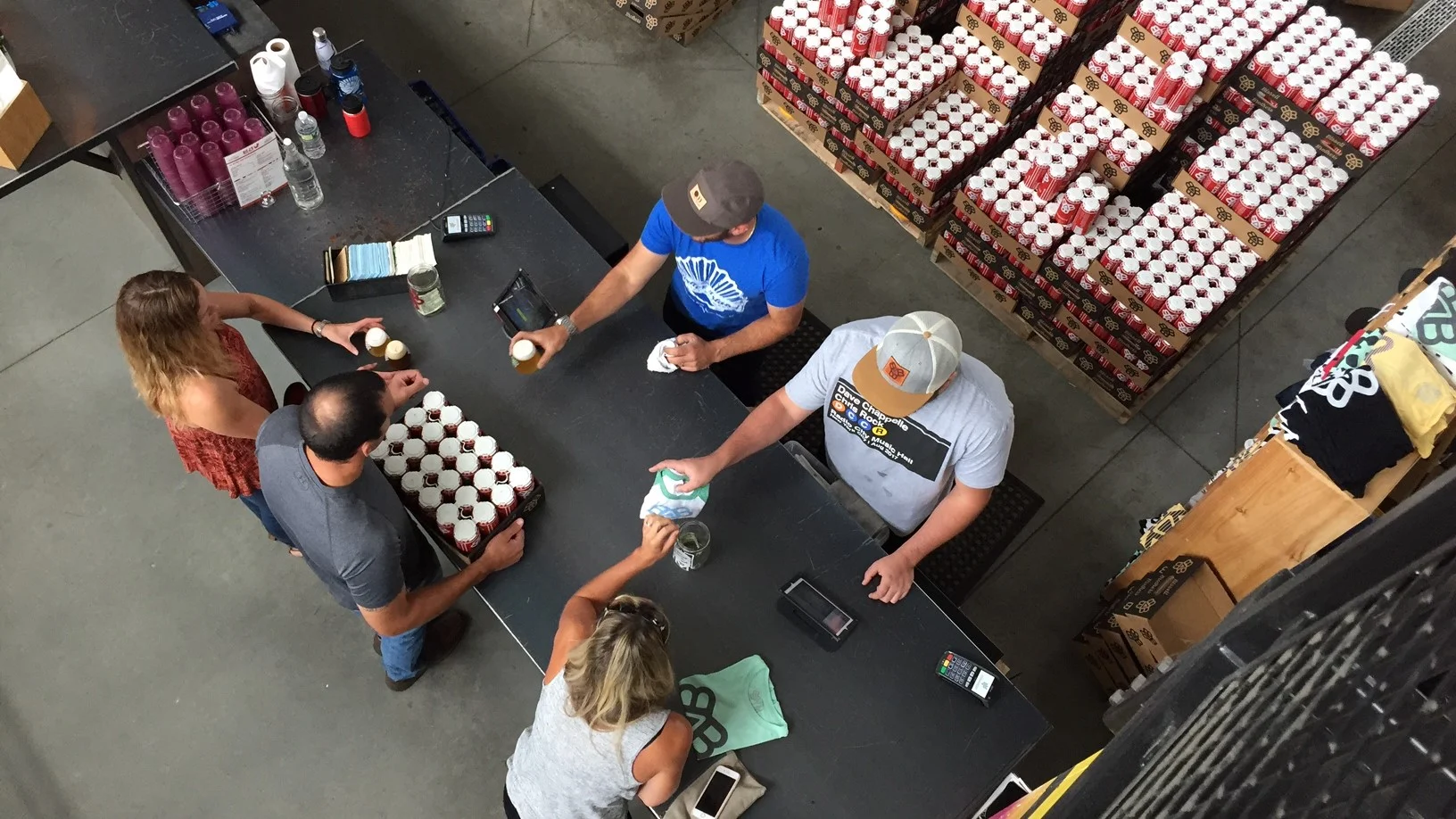--Post updated with revised figures-- When the GOP pushed through tax cuts this week, they included a tax cut for breweries. It's a bipartisan proposal that's been kicking around with broad support that will actually benefit the little guy--in this case craft breweries. But is it good policy?
Read MoreI guess we have to talk about Dilly Dilly. It's the catch phrase in the latest ad campaign launched by Bud Light, one that has achieved rare virality on social media. No matter how you slice it, it's become a national meme. But has it been good for Bud Light?
Read MoreFive years ago, Adam Milne established Old Town Brewing's leaping stag as a legal trademark. But for the past two years, he's been locked in a legal battle with the City of Portland, which wants to use that logo so it can license products by AB InBev. Here's the whole maddening story.
Read MoreYesterday, Boston-based Harpoon announced the purchase of contract brewery Clown Shoes. But this post isn't going to be about the acquisition. Rather, it's about how companies mature and markets sand off rough edges of any company that wants to stay around.
Read MoreThis follows the summer launch of a effort to enroll member breweries an independent seal program. "Take Craft Back" is the second prong in the larger campaign. It was a surprising, creative, and frankly aggressive move to engage the fight against "big beer."
Read MoreLike every brewery of a certain age, Hopworks once-novel IPA started to taste dated once the newer wave arrived a few years ago. In a surprising, fascinating move, Hopworks has reformulated their flagship, a makeover that changes everything (including the label) except the name.
Read MoreIn one of the tinier pockets of the brewing world, a heated debate rages. What should Americans call the beer made in the manner of spontaneously-fermented Belgian lambic? This wasn't remotely an issue until about 2007, when Allagash Brewing started a program that followed the practices quite closely. There may have been some efforts along the way toward traditional lambic-style beer, but Allagash built a dedicated coolship room and committed to an ongoing program making the beer. Last year, one of the small club of Americans making these beers decided to name and codify it, and thus began the debate.
Read MoreIn 1993, Redhook's Paul Shipman made an interesting decision--he decided to reach out to Anheuser-Busch. That phone call would eventually lead to the first investments by big beer into smaller breweries, as the company bought minority stakes in Redhook and later Widmer.
Read MoreThirty-two years ago, three psychologists published a paper "On the Misperception of Random Sequences"--also known as the "hot-hand fallacy." They looked at several data sets and concluded that the previous performance of the player had no effect on the likelihood he'd make any given shot.
Read MoreEver since he released his memoir, Quench Your Own Thirst: Business Lessons Learned Over a Beer or Two, Boston Beer's Jim Koch has been on a mission to shape his legacy. He'd love to be seen as not just a man who conquered the business, but one who founded and nurtured an industry.
Read MoreIn relatively short order cans have gone from a package customers will grudgingly accept to something entirely unexpected. Now, for certain breweries and certain types of beer, they signal freshness and trendiness.
Read MoreYesterday two large concerns announced two very different acquisitions. The first was routine: Constellation Brands, who stunned the beer world by paying a cool billion dollars for Ballast Point two years ago, announced the purchase of Florida's Funky Buddha.
Read MoreI was interested in two very basic questions: 1) Did breweries believe it was important for consumers to know about breweries' independence?, and 2) were they planning to use the seal? I canvassed a half dozen breweries of different sizes from different parts of the country and got responses from four--Ninkasi (OR) and Harpoon (MA), large craft breweries, Port City (VA), a medium-sized brewery, and Gigantic (OR), a small brewery.
Read MoreYesterday, the Brewers Association announced a logo--or "seal" in their jargon--certifying a brewery's independence. It demonstrates the Brewers Association has narrowed its focus to what is truly important to members and is preparing to move to the offense. This is a smart initiative.
Read MoreLast week, AB InBev (ABI) made news (and sparked anxiety) by buying Asheville's Wicked Weed brewery. This week they've caused even more anxiety when news broke that they had seized the entire crop of South African hops. Dozens of stories have been written about it, and breweries have been shooting off angry emails all week.
Read MoreHere's the thing: breweries are unusual businesses. They make a product to which their customers have a strong sense of emotion. This long predates craft beer--for generations, people have attached themselves to Miller or Hamm's or Budweiser with something like the zeal they favor their hometown baseball teams
Read MoreOn one end of the market, flavor is driving sales. Leaders in the craft segment may be suffering, but as Bud (down 5.6% this year) and Bud Light (-3.6%) both continue a slow death spiral, mass market craft like Goose Island are flying off shelves. So how does a flavorless, blandly corporate beer becoming one of the few success stories in the domestic mass market sector? Branding is the only answer anyone can identify.
Read MoreOver at Willamette Week, Matthew Korfhage has an article about Oregon's tightening beer market. The story is an Oregonized version of one we've seen applied to the national market a number of times over the past couple years. Thumbnail: in a tightening market, it's harder for the biggest players to maintain their barrelage even while small and mid-sized breweries continue to post big numbers. This is, in fact, what you'd expect in a mature market and it's not particularly surprising. Korfhage's case-in-point in the article is BridgePort, which is busy imploding before our eyes--but I think this illustrates a different lesson: in a tightening market, a brewery can no longer make a series of stupid decisions and expect to avoid tanking spectacularly.
Bryan Roth, beer's Nate Silver, has applied some data journalism to the idea that rare beers dominate "best of" lists--and beer geeks' hearts. Riffing on that, he wondered about causality: do we just happen to like rare beers, or do we like them because they're rare?
Read More



















